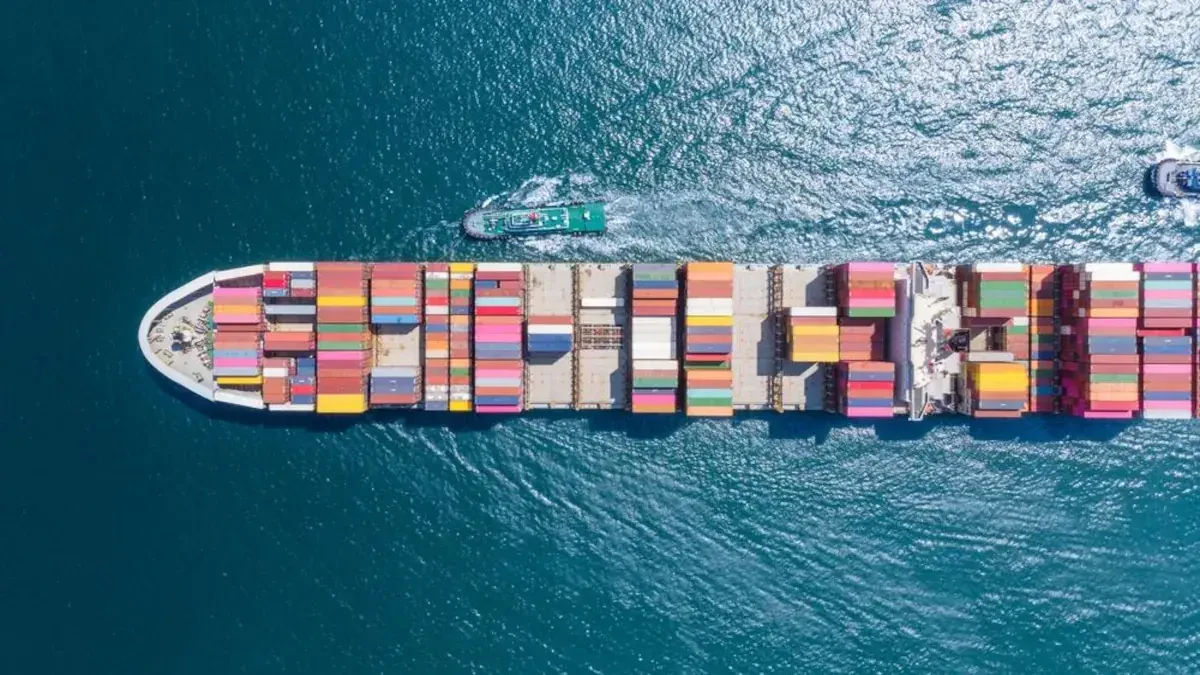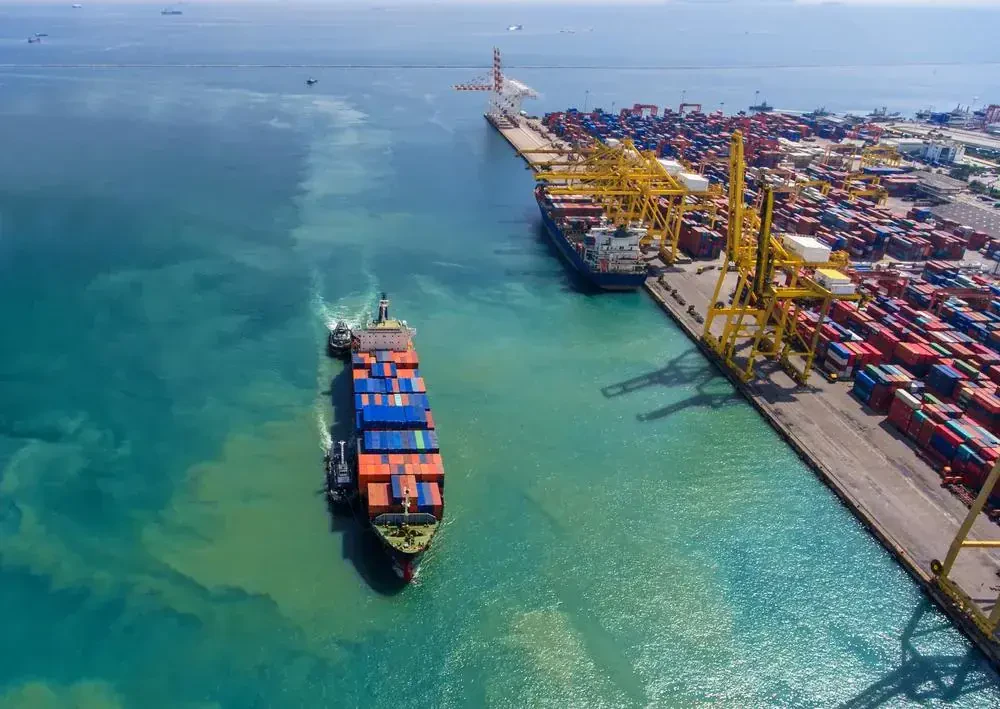Published by Chris Townsend
Last updated Dec, 11 2025

How Much Does It Cost of Shipping A Container To Dominica?
There are numerous reasons why you might need to move containers to Dominica. Using shipping containers is one of the best ways to move your entire home, relocate your office, or ship a large quantity of produced goods.
Whatever your reasons are, Three Movers can provide solutions to help you ship your cargo to Dominica.
However, keep in mind that the hauling costs can vary depending on a variety of factors. With that in mind, here are some factors to consider when calculating the cost of carrying shipping containers!
How much does it cost to relocate a container?
The cost of relocating varies depending on the destination, route, service, product weight, and other factors. Here's a quick overview to help you learn more about them:
- The volume and weight of your items: This is an important consideration when determining shipping costs. If you have a large package, shipping will be expensive. The same is true for package weight. A larger box costs more to ship.
- Transportation mode: The ways of delivery you select will have an impact on your international shipping charges. If you're exporting overseas, you'll be able to choose between air and sea freight. The cost of international relocating can differ significantly between the two. The cost of air freight is more than the cost of sea freight.
- Distance: Long-distance shipments cost more than freight with a close destination. When determining how far your shipment will travel, carriers frequently employ dynamic geographic zones.
- Season: International hauling, like any other industry, has busy periods. Summer and the days preceding Chinese New Year are the busiest times. Hauling prices will be higher than usual during these months.
Other things to think about while delivering commercial or personal items:
- Insurance
- Packing
- Taxes and Custom fees
- Inspections
- General Rate Increase
- Storage
The peak season in Dominica lasts from October through January. If you ship during those months, expect higher freight prices.
Which Size of Container Works Best for Me?
For residential and business freight, a 20ft or 40ft container is the ideal solution.
Household items of a three-bedroom house can fit within a 20-foot container. It has 33 cubic meters (cbm) capacity, although the usable area is only about 25-28 cbm.

The 67 cm capacity of the 40-foot container is another impressive feature. Nevertheless, it can only hold 54-58 cbm. Still, 40-foot containers are the finest option for carrying a lot of items.
It is not necessary to pay for the entire container while exporting your belongings. Shipping options include FCL (Full Container Load) and LCL (less than container load).
LCL shipping requires you to share a container with other customers. In contrast, if you went with FCL you would have to shell out for a whole container worth of shipping costs. This is a more convenient and secure option as your personal belongings will be the only ones stored in the container.
Average Shipping Rates Estimates

FCL shipping is best for transporting lots of boxes, pallets, and anything that will require a full container shipping to Dominica of up to 45,000lbs.
Full Container Load (FCL) Shipping Rates | |
|---|---|
| 20 ft Container | $1868 |
| 40 ft Container | $2156 |

LCL shipping is a more affordable way to transport less than container load shipments to Dominica.
Less Than Container (LCL) Shipping Rates | |
|---|---|
| LCL | $125/CBM |
| Personal Effects | $795 |
| Household Goods | $855 |

International house moving to Dominica services - quick, easy and cheap.
International House Moving Costs | |
|---|---|
| Partial House (2000Lbs & Less) | $685 |
| 1 Bedroom (3850 Lbs) | $3205 |
| 2 Bedroom (4500 Lbs) | $3804 |
| 3+ Bedroom (8750 Lbs) | $4505 |

International auto transport services to Dominica via RoRo and container ships. Ship cars, trucks, SUVs, ATVs, boats, RV's, heavy equipment, and more.
Container Car Shipping | |
|---|---|
| Sedan (Container) | $2807 |
| SUV (Container) | $2907 |
| Sedan via RORO | $1553 |
| SUV via RORO | $1654 |
Different Types of Freight Transportation
Each mode of transportation has advantages and downsides. However, understanding them can help in determining the appropriate type of transportation for your container.
To give you an idea about it, here's a breakdown of each form of transportation's advantages and disadvantages.
For both local and intercontinental shipping, land transit is the most often employed mode of transportation. It has the advantage of being both simple and inexpensive. This approach, however, is only available to areas accessible by road or track.
Air freight is also a viable option for transporting your stuff. It's quick, and it's the best choice if you're simply moving a few boxes at a time. You can fly your container to Dominica, but this is an expensive mode of shipping.
You could use ocean freight if you don't want to spend a lot of money on shipping. Ships can carry far larger loads at a quarter of the price of air transportation. It is the chosen means of transport for sending huge objects in bulk. Even though it's the most cost-effective international shifting method, it is also the most time-consuming. Your cargo could take several days to a few weeks to arrive at its destination.
What's next?
Whether you're shipping personal stuff or consumer products, Three Movers can keep your items safe during the overseas hauling route.
Contact us right now to learn more about how our solutions can help you optimize relocating and secure your cargo. You can fill out our web form or call us at (888) 202-0036 to get a free quote.

Find Cargo Containers For Freight Transport & Relocation
Frequently Asked Questions
A 20-foot container to Dominica typically ranges $3,200–$6,000, while a 40-foot container ranges $4,800–$9,000. Pricing is shaped by origin port, freight type (FCL vs shared), container size, fuel surcharges, seasonal congestion in the Eastern Caribbean, and Dominican port handling fees. Heavy loads, hazardous items, and rural delivery add cost. Customers comparing options often review our international moving costs.
Key cost drivers include distance, container size, shipment weight, packing needs, route demand, and whether door-to-port or door-to-door service is required. Caribbean islands also experience weather-related slowdowns, cargo consolidation delays, and varying port fees. Customs clearance, documentation, and potential inspections may add charges. Related pricing guidance appears in our moving overseas shipping costs.
Most sea-freight shipments arrive in 18–32 days, depending on origin, routing, and transshipment through larger Caribbean hubs. Weather patterns, port congestion, and vessel schedules influence total time. Delivery beyond port requires extra coordination with local carriers. Transit-time ranges are similar to other Caribbean shipments covered in our international moving and storage resources.
Common paperwork includes bill of lading, packing list, commercial invoice, ID or passport, and applicable import permits. Cargo may need certificates for food, plants, or equipment. Proper documentation reduces clearance delays and prevents added demurrage charges at the port. These requirements apply whether using a full container or consolidated load.
Dominica restricts firearms, counterfeit goods, hazardous chemicals, spoiled food, and materials considered obscene. Some items require permits, including agricultural goods and pharmaceuticals. Restricted cargo can raise inspection fees or cause port holds, increasing total cost. Always confirm compliance before loading your container.
Import charges may include customs duty, value added tax, environmental surcharges, and a customs service charge. Rates depend on item classification and CIF value. Duties can materially change the true cost of your shipment, especially for vehicles or commercial cargo. Accurate declarations and complete invoices help prevent reassessments.
Yes. Insurance protects against loss or damage caused by rough seas, humidity, handling, or delays at regional transshipment hubs. Most policies use an all-risk basis and are priced from the shipment’s declared value. Insurance is a practical safeguard on international container routes, where weather and port conditions can shift quickly.


